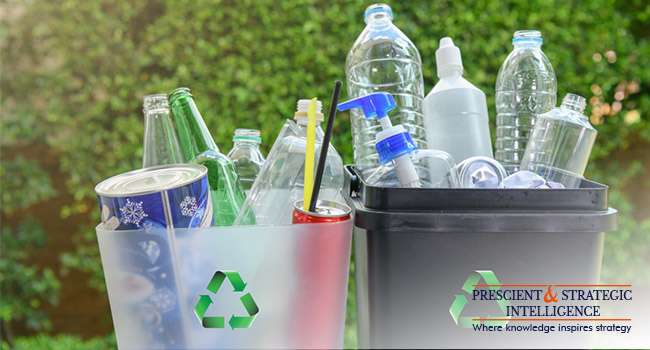Recycled Plastic Market its Future Outlook and Trends

Key Highlights
The recycled plastic market was USD 68.2 billion in 2023, and it will touch USD 122.7 billion, with more than 8.8% CAGR, by 2030.
The rising emphasis on reducing plastic waste volume is a major driver. The worldwide increase in commercialization and industrialization has boosted the usage of plastics, which has resulted in high waste production.
This high-volume production of waste and lack of appropriate disposal channels have added to the generation of high levels of marine and land pollution.
As per the International Union for Conservation of Nature estimates, approximately 14 million tons of plastics culminate in oceans annually.
Many stakeholders, such as manufacturers, governments, and consumers, are progressively shifting plastic consumption patterns, recycling waste polymers, fixing conventional production lines to decrease the volume of plastic waste, and developing goods that are simply processable post-use.
Biocontamination and waste are major problems, which have led local municipalities to establish parallel economies to control waste volumes.
Advanced plastics recycling, or chemical recycling, comprises various procedures for transforming post-consumer polymers back into their original building blocks, specialty polymers, feedstocks for new plastics, waxes, fuels, and various other beneficial products.
Such innovative technologies are considerably driving the industry for used plastics to assist in keeping more plastics out of the environment and in beneficial use.
Key Insights
- APAC was the largest contributor to the industry. This is primarily because of the development of a substantial number of small-scale processing facilities in this region.
- North America is likely to advance at an 8.5% compound annual growth rate in the years to come.
- This will be credited to the improvement of domestic abilities to enhance plastic recycling quantities and the advancements in the plastics recycling supply chain through the incorporation of efficient and innovative procedures.
- The packaging materials category is likely to advance at more than 9.3% compound annual growth rate in the years to come.
- This is because of the relative ease with which pouches, bottles, films, and wraps can be recycled, the easy employment of mechanical methods for recycling packaging waste, and the high need for reprocessed products.
- PE was the most recycled material in 2023, generating reprocessed material for implementation in downstream sectors as a replacement for virgin material. This category will further advance at a 9.4% CAGR in the years to come.
- This is mainly because of the high manufacturing volume of virgin PE, a significant recycling rate for it, and a high waste disposal and generation level.
- The food & beverage category was the largest contributor to the industry in 2023, with a share of approximately 45%.
- The food & beverage sector utilizes various plastics, including HDPE, PET, PP, PS, and LDPE, for storage, packaging, preservation, ease of transportation, and improving the visual appeal of processed food & beverages, specifically perishable items.
- The recycled plastic industry is very fragmented and categorized by the existence of extremely concentrated low-capacity companies across different regions.
- These local vendors and regional companies have a low-volume plastic processing capability and have collection systems or purchase waste from industrial and residential waste producers.